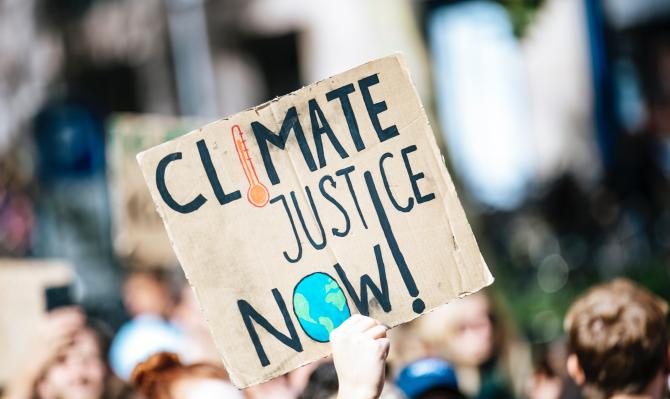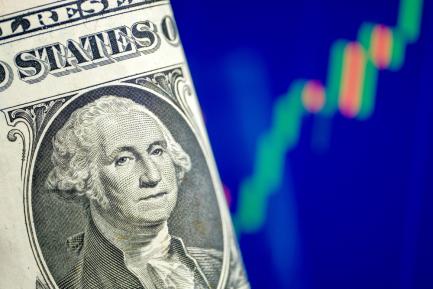Green finance in focus
In 2015, in Paris, 196 countries committed to work to limit global warming to 2°C (or below) with respect to pre-industrial levels. In order to comply with the Paris agreements and achieve a transformation towards a low-carbon economy and a more efficient use of resources, major structural changes and a considerable mobilisation of resources are required. In Europe alone, the European Commission estimates that additional investment amounting to 180 billion euros per year (up to 2030) is required in the energy and transport sectors (see the first chart).1
The challenge, therefore, is vast and requires the active participation of a wide range of players, including the affected industries and governments. But the role that the financial sector can play in the transition towards a sustainable economy is also key. In this article, we focus on the role of green finance in the fight against climate change and the obstacles that are holding back its full development.
In effect, the financial sector, as an intermediary between savings and investment in the economy, can facilitate the channelling of funds towards activities that contribute to more sustainable forms of development and have environmental benefits, such as those aimed at reducing air pollution, improving energy efficiency or adapting to and mitigating the effects of climate change. Following this logic, green finance (which is part of a broader concept of sustainable finance)2 has become a priority issue in several international forums, including the G20 agenda. Furthermore, its development in recent years has been quite remarkable. As the second chart shows, interest in investments and financial instruments linked to sustainability, such as green bonds, is growing rapidly.
However, despite the progress made in recent years, there is still a long way to go and the deployment of private capital to finance green projects is still limited. For example, total green bonds issuances reached 500 billion dollars in November 2018, just 11 years after the first green bond was issued. This may seem like a lot, but this figure represents less than 1% of total bonds issued worldwide.3 In addition, green infrastructure assets represent less than 1% of the total assets held by institutional investors.4
In this context, the potential to scale green finance is considerable. To do this, however, a series of institutional and market barriers must be overcome, some of which relate specifically to the mobilisation of resources towards green investment projects.
First of all, there is a lack of a common framework that clearly defines what constitutes a green activity. Specifically, there is currently no standardised classification nor any consistent and reliable labelling of green financial products. This implies that investors cannot be sure that their money is effectively invested in sustainable projects,5 thus holding back the full development of markets for green financial products.
Secondly, other obstacles to be considered are the asymmetric information problems between investors and the recipients of funds. In short, it is argued that the returns on investments in green projects are difficult to assess due to, among other factors, the lack of definitions, adequate risk assessment models and an information disclosure framework that allows comparisons between projects (such as guides for companies to disclose the way they incorporate elements of sustainability into their investment processes or the effects of their products or investments on the climate).6 This lack of information contributes to increasing the costs involved in searching for green projects and limits financial flows towards sustainable activities.7
Thirdly, economic agents tend not to adequately incorporate –in some cases due to a lack of information– the environmental (physical) risk and transition risk8 into their financial and investment decisions, whichleads to a distorted assessment of the risk-return between different projects.9 The fact that agents fail to incorporate the environmental externalities into their analysis implies that, among others, the environmental risk is not reflected in the price of financing and that there is a suboptimal capital allocation between green projects (environmentally friendly) and brown projects (those that do not incorporate the environmental dimension into their analysis and involve an intensive use of fossil fuels). In this regard, an improvement in the transparency and reporting mechanisms so that investors can understand first-hand which companies are less exposed to the effects of climate change, and a correct financial assessment of the environmental risks, would help to discourage investment in the more polluting industries.
In addition, there are also more generic barriers that affect the financing of long-term investments. In particular, some investment projects (including some green projects) require more capital to be financed and/or over a longer than usual time horizon. However, bank financing and financial instruments in capital markets usually have a short to medium term horizon. This maturity mismatch between assets and liabilities used in green projects contributes to there being less financing available for very long-term investments.
In order to overcome these barriers and enhance the role of finance in the ecological transition, broad coordination at the international level integrating all the agents involved is essential, given that this is a global challenge and that establishing a common benchmark and regulatory standards so requires it. In this regard, the European Commission’s work to agree on a common taxonomy, such as the Action Plan on Sustainable Finance (presented in 2018) and the working groups created to involve the financial industry in this process is of particular note.
Similarly, it is important that agents have information on climate scenarios10 in order to properly identify, quantify and mitigate environmental risks and exposures. Also, the regulatory framework must be clear and stable in order to help players anticipate and manage the changes associated with this transition towards a more sustainable economy. Of particular note the initiative of the working group of the Financial Stability Board11 – led mainly by investors and asset managers – to improve transparency, truthfulness, comparability and the dissemination of information related to climate risks.
In short, various agents (companies, governments and regulators) have a role to play to support this transition towards an economy that is more sustainable in the long term. This includes the financial sector, as an intermediary between savings and investment. However, in order for this transition to be effectively financed, it is essential to work to eliminate the barriers that limit the development of green finance.
Roser Ferrer
1. According to the EIB, this figure rises to 270 billion euros if we include the investment needs in water and waste management.
2. Sustainable finance channels funds towards investments with a defined social purpose.
3. Green Finance Study Group (2016). «G20 green finance synthesis report». Toronto: G20 Green Finance Study Group.
4. In addition, it remains difficult to accurately quantify and compare the progress of sustainable finance in the financial markets. This, in part, is due to inconsistencies in definitions, classifications and methodologies, as well as due to the lack of data (historical data, by asset type and by region).
5. This is known as greenwashing risk, i.e. the risk that products and services that are presented as being sustainable or environmentally friendly in reality are not.
6. Long-term investors require information on how companies are preparing for the ecological transition, given that better prepared companies can have a competitive advantage over their rivals.
7. See note 4.
8. Linked to the process of adjusting to a low-carbon economy. This includes regulatory changes, those arising from new technologies and changes of preferences that can lead to a revaluation of various assets and create credit exposures for financial institutions.
9. Specifically, companies that invest more intensively in activities with higher risks related to climate change may be more vulnerable to the transition towards a low-carbon economy, which could end up being reflected in lower returns.
10. With homogeneous models that contain disaggregated data and involve the scientific community.
11. Task Force on Climate-related Financial Disclosures https://www.fsb-tcfd.org/about/#






